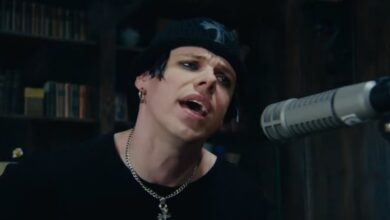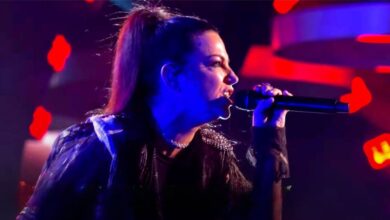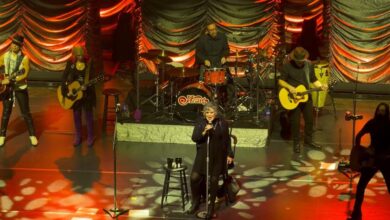This Unbelievable Paris Flash Mob Delivers the Most Epic “Bohemian Rhapsody” Tribute You’ll Ever Witness
There are moments when music transcends setting and circumstance, capturing a kind of raw electricity that can’t be rehearsed. Such a moment unfolded on a warm July night in Paris, where the Place de la Contrescarpe morphed into an impromptu stage. The evening honored the half-century milestone of Queen’s “Bohemian Rhapsody,” and those who witnessed it agreed that the tribute rivaled anything seen in grand concert halls.
The gathering, held on July 10, 2025, was orchestrated by pianist and visionary Julien Cohen, whose passion drove the project from idea to reality. Nearly thirty musicians and singers joined forces, weaving together a nine-minute odyssey that carried the song’s unique dramatic arc. From the quiet, melancholic piano introduction to its operatic explosion and finally into thunderous rock, every shift was carefully staged to echo the original’s brilliance.
Adding dimension to the spectacle, singers leaned out from windows surrounding the cobblestoned square, turning nearby apartments into balconies of sound. The echoes of “Galileo” ricocheted across the walls, creating the illusion that the entire neighborhood had become part of the performance. Passersby stopped in awe, their faces tilted skyward as the voices cascaded through the streets like a living soundscape.
When the lead vocals entered, the transformation felt complete. Mickey Callisto, the frontman, made a theatrical entrance atop a horse-drawn carriage, exuding a confidence and showmanship reminiscent of Freddie Mercury himself. His presence electrified the square, but it was complemented perfectly by the astonishing guitar work of eleven-year-old prodigy Olly Pearson. With both precision and flair, the young musician poured himself into Brian May’s legendary solos, earning gasps of amazement from the crowd.
Audience reactions were immediate and heartfelt. Cheers rose with each soaring note, and when Pearson unleashed his climactic solo, one listener shouted, “That kid is destined to be a star!” Such organic moments of praise underscored how authentic the performance felt, reminding everyone why Queen’s masterpiece continues to inspire new generations. For many, the night blurred the line between audience and participant, creating a shared sense of celebration.
The grand coordination of voices and instruments eventually found its way online, immortalized through Cohen’s camera work. Released to YouTube on September 9, the video began to ripple across digital communities almost instantly. Within a single day, views skyrocketed past half a million, carried by endless reposts and enthusiastic comments. Admirers labeled it a “work of art” and admitted the performance had left them shivering with chills, beginning to end.
As more viewers discovered the clip, momentum only grew. Social feeds lit up with shares, often accompanied by words like “unforgettable,” “magical,” and “the most uplifting thing I’ve seen in years.” The collective response was more than simple nostalgia; it was proof that even in the digital age, a thoughtfully staged street performance could unite strangers around the same song, the same joy, and the same astonishment.
For those in the square that evening, the atmosphere was nothing short of communal euphoria. When the last resonant chords faded, strangers embraced, laughed, and applauded together, savoring the rare kind of unity only music can summon. The clip’s viral spread seemed to mirror that moment, as if the same applause had traveled outward to every corner of the world, drawing people together in one collective ovation.
The performance has since been etched into the memory of both those who were present and the millions who experienced it through their screens. It wasn’t only about a classic rock anthem brought to life, but about the reminder that music still has the power to break barriers, blur divisions, and remind us of what it feels like to belong. In a world of fleeting attention, this spontaneous Parisian celebration offered proof that true artistry can stop time, if only for nine minutes.





